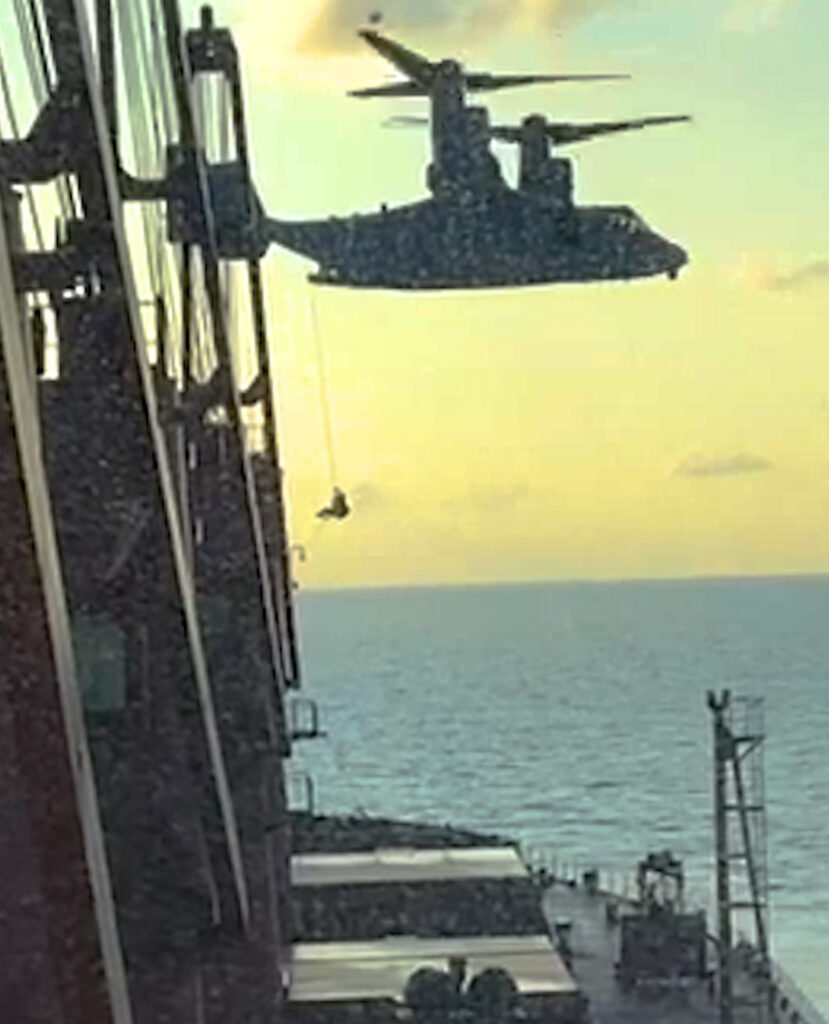US Air Force Team Rappels From Chopper Onto Cargo Ship To Save British Sailor With Suspected Heart Attack
This is the moment a US Air Force Team rappels onto a cargo ship in the middle of the ocean to save a British mariner who was suffering from a suspected heart attack.
The United States Africa Command (AFRICOM), responsible for all military activities in the region, said that the British mariner, who was not named, was saved by medics who were called out to the ‘Liberty Grace’ US-flagged, cargo ship, in the Indian Ocean, an estimated 500 miles east of Kenya.
AFRICOM used their Warfighter Recovery Network (WRN) after receiving a request to assist the mariner who was suffering from heart attack-like symptoms. The Warfighter Recovery Network is set up to help find and treat injured personnel, often involving rescues that cover very large distances.

The footage shows the task force team hovering above the cargo ship while the rescuers rappel onto the ship.
Trevor Clark, a US Air Force Master Sgt, said that the mission demonstrated how effectively the WRN can come together and save lives even in the most remote parts of the ocean.
He added: “While this mission presented unique circumstances, we adapted to what was given.”

PRTF deployed an MV-22B Osprey with five US Air Force Pararescuemen, who are expert in rescuing people from hostile environments, to the ship’s location with the task of stabilising the patient and getting him to a medical facility back on land.
The vessel was located outside of the MV-22B Osprey’s range so a KC-130 tanker craft was also deployed to keep the aircraft topped up with fuel as it made its way out into the Indian Ocean.
The Osprey and its crew arrived at the ship’s location on 13th November. They spent a night aboard the cargo ship while it sailed 150 nautical miles off the coast of an airfield in Kenya.

The next day the WRN was assisted by a Super Puma aircraft from the Manda Bay Airfield which delivered the patient to the airfield.
From the airfield, the patient boarded a DHC-8 aeroplane which flew directly to a hospital in Nairobi.
Clark said: “The patient is doing well and I am so proud of my team for their part.”

Rescue missions in the region are extremely complicated due to how dispersed naval units are and the always-changing security environment that is found throughout much of Africa.
Gregory Anderson, US Africa Command director of operations, said that the WRN has undergone considerable upgrades recently which has allowed it to become more timely in evacuating injured personnel.


